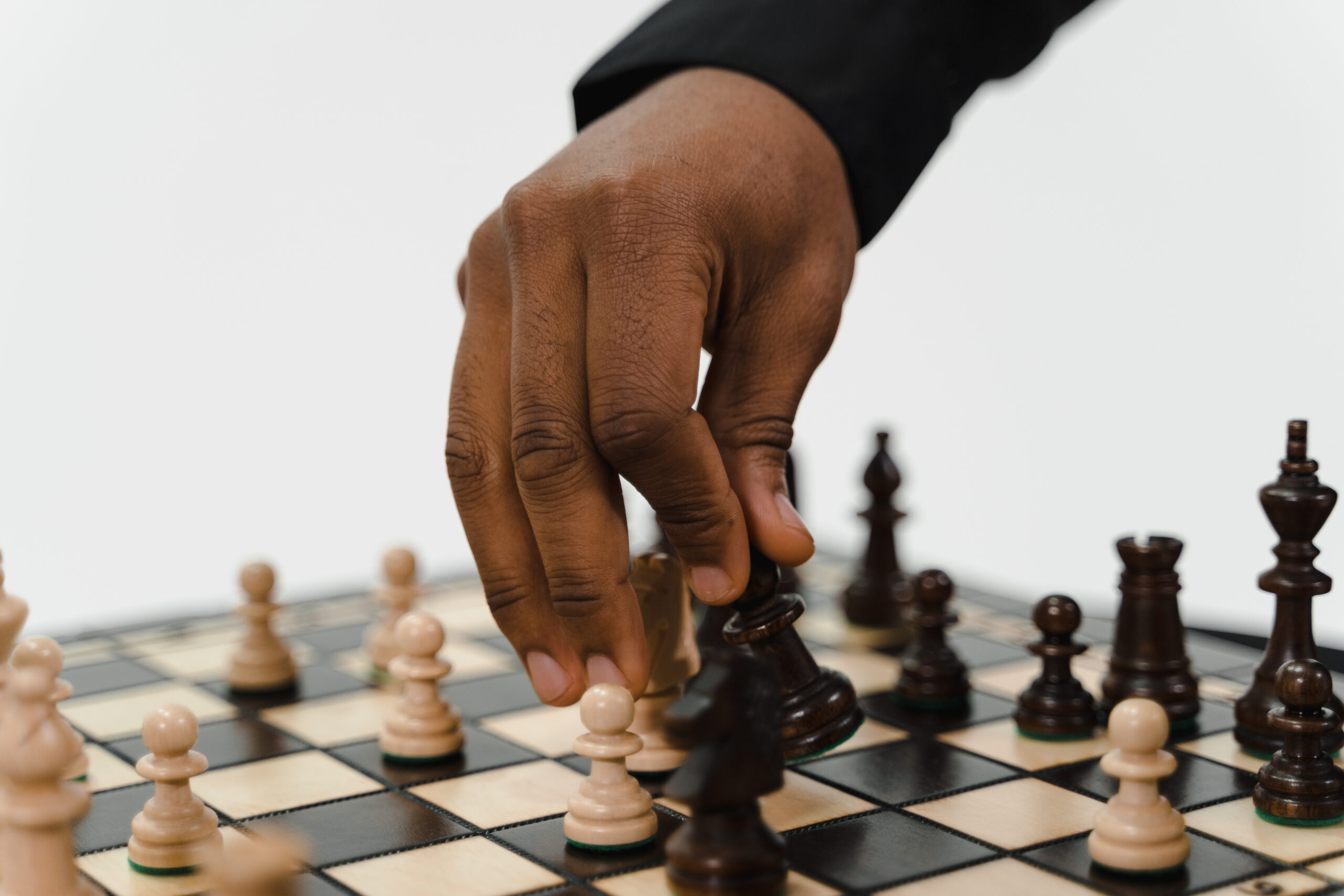If you’re looking to elevate your chess game and gain a strategic advantage, then mastering the Italian Game Opening is a must. In this article, we’ll delve into the world of chess openings, exploring the intricacies of the Italian Game and how to leverage it effectively. From in-depth strategy discussions to analysis of famous matches, we’ll unlock the secrets of grandmasters, helping you become a strategic chess wizard. So, get ready to uncover the mysteries of the Italian Game Opening and take your chess skills to new heights.

Overview of the Italian Game
Introduction to the Italian Game
The Italian Game is a popular chess opening that begins with the moves 1.e4 e5 2.Nf3 Nc6 3.Bc4. It is characterized by its emphasis on rapid development and control of the center. The opening is named after Italian players, as it was widely played during the 16th century in Italy.
Historical Significance
The Italian Game has a rich historical significance in the world of chess. It was one of the earliest recorded openings and has been played by countless grandmasters and world champions throughout history. Notable players such as Garry Kasparov, Bobby Fischer, and Magnus Carlsen have all utilized the Italian Game in their games. Its long history and continued popularity make it a highly respected and studied opening.
Basic Principles
The Italian Game revolves around two main principles: pawn structure and piece development. Controlling the center of the board is crucial, and players often employ their pawns to achieve this goal. Additionally, swift piece development is a hallmark of the Italian Game, allowing players to quickly mobilize their forces and launch attacks.
Popular Variations
The Italian Game offers several popular variations, each with its own unique strategies and tactical ideas. Some of the most well-known variations include the Giuoco Piano, Evans Gambit, and Two Knights Defense. These variations provide players with different opportunities and challenges, enhancing the versatility and depth of the Italian Game.
Understanding the Italian Game
Pawn Structure and Center Control
In the Italian Game, the structure of the pawns plays a crucial role in determining the flow of the game. Players strive to control the center of the board with their pawns, aiming to create pawn breaks and open up lines for their pieces. Understanding how to maneuver and protect the pawns is essential for a successful Italian Game strategy.
Piece Development
Rapid and efficient piece development is a key aspect of the Italian Game. Players aim to bring their knights and bishops into active positions, with the ultimate goal of creating threats and launching attacks. Proper piece development can provide a crucial advantage in the early stages of the game.
Pros and Cons of the Italian Game
Like any opening, the Italian Game has its strengths and weaknesses. The advantages of the Italian Game include its solid pawn structure, strong piece development, and potential for attacking opportunities. However, its drawbacks include the risk of falling into traps and counterattacks, as well as the possibility of neglecting other important aspects of the game.
Typical Plans and Strategies
In the Italian Game, players often adopt certain plans and strategies to guide their gameplay. These can include ideas such as building a strong center, initiating attacks on the opponent’s position, or creating imbalances to unsettle the opponent. By understanding and implementing these typical plans, players can effectively navigate the complexities of the Italian Game.

Key Moves and Tactics
The Giuoco Piano: 2…Nc6
The Giuoco Piano is one of the most common moves in the Italian Game. After 1.e4 e5 2.Nf3 Nc6, the move 3.Bc4 is played to develop the bishop and attack the e5 pawn. This move sets the stage for the Giuoco Piano, where players aim to develop their pieces harmoniously and establish a solid pawn structure. Understanding the key ideas and tactical opportunities in this variation is crucial to mastering the Italian Game.
The Evans Gambit: 4.b4
The Evans Gambit is a highly aggressive and tactical variation that arises after 1.e4 e5 2.Nf3 Nc6 3.Bc4 Bc5 4.b4. In this move, White sacrifices a pawn to open up lines and create attacking opportunities. The Evans Gambit demands accurate calculation and tactical awareness from both players. Understanding the underlying ideas and tactics is essential to successfully navigate this exciting variation.
The Two Knights Defense: 4…Nf6
The Two Knights Defense is a bold response to the Italian Game, where Black plays the move 4…Nf6. This move allows Black to challenge White’s control of the center and create counterattacking chances. Both players must be aware of the potential tactical traps and tactics that arise in the Two Knights Defense. Studying the common ideas and tactical motifs in this variation is key to a successful Italian Game strategy.
Tactics in the Italian Game
The Italian Game offers a wealth of tactical opportunities for both players. Tactical motifs such as forks, pins, skewers, and discovered attacks are commonly seen throughout the opening. Proper tactical awareness and calculation are crucial skills for players looking to excel in the Italian Game. Identifying tactical shots and exploiting weaknesses in the opponent’s position can lead to decisive advantages.
Analyzing Famous Italian Game Matches
Kasparov vs. Kramnik (1994)
In their 1994 match, Garry Kasparov and Vladimir Kramnik engaged in a fascinating battle that showcased the strategic complexities and tactical possibilities of the Italian Game. This match serves as a valuable resource for players looking to understand the key ideas and plans in the Italian Game, as well as the tactical pitfalls to avoid.
Fischer vs. Spassky (1972)
The World Championship match between Bobby Fischer and Boris Spassky in 1972 saw the Italian Game being played in several games. Fischer’s creative and dynamic play demonstrated the potential for unbalancing the position and taking advantage of tactical opportunities. Analyzing this match can provide insights into successfully executing strategic plans and tactics in the Italian Game.
Carlsen vs. Anand (2013)
In their 2013 World Championship match, Magnus Carlsen and Viswanathan Anand showcased the modern approach to the Italian Game. Carlsen’s deep understanding of the opening’s positional nuances allowed him to outmaneuver Anand and gain a significant advantage. Examining the strategic and tactical choices made by both players in this match can enhance one’s understanding of the Italian Game.
Lessons from Famous Italian Game Matches
Studying famous Italian Game matches provides valuable lessons and insights for aspiring players. From these matches, players can learn about the intricacies of pawn structure, piece coordination, strategic planning, and tactical exploitation. By incorporating the lessons and ideas from these matches into their own games, players can enhance their skills and achieve better results in the Italian Game.

Common Mistakes to Avoid
Overextending and Exposing King
One common mistake in the Italian Game is overextending one’s position, which can leave the king vulnerable to attacks. Players should be cautious about advancing pawns and weakening their king’s safety. Maintaining a solid and well-protected king is vital in the Italian Game.
Neglecting Piece Activity
Neglecting active piece development can hinder a player’s progress in the Italian Game. It is essential to mobilize all pieces efficiently and coordinate their efforts towards controlling the center and generating threats. Neglecting piece activity can result in a passive and disadvantageous position.
Falling into Traps and Counterattacks
The Italian Game offers various tactical opportunities that can lead to traps and counterattacks. Players should be aware of potential tactical shots and avoid falling into pitfalls set by their opponents. Vigilance and calculation are necessary to navigate through tactically intricate positions.
Neglecting Development
Neglecting the development of minor pieces, such as knights and bishops, can hinder a player’s progress in the Italian Game. Careful attention should be given to harmonious piece development, allowing for active and coordinated play. Neglecting development can result in a lack of mobility and strategic flexibility.
Strategies for White
The Italian Game as a Weapon for White
As White, the Italian Game can be a powerful weapon to gain early initiative and apply pressure on Black’s position. By properly coordinating pawn breaks, developing minor pieces energetically, and seizing control of the center, White can establish a solid foundation for launching successful attacks.
Building a Strong Center
A key strategy for White in the Italian Game is to build a strong central pawn structure. By occupying the central squares with pawns, White can restrict Black’s options and create opportunities for piece mobility. The strength of the center can provide a foundation for both defensive and offensive maneuvers.
Initiating an Attack
The Italian Game offers multiple possibilities for White to initiate an attack on Black’s position. By capitalizing on tactical opportunities, exploiting weaknesses in the opponent’s pawn structure, and coordinating piece activity, White can launch successful attacks and put Black on the defensive.
Creating Imbalances
Strategic imbalances in the Italian Game can provide White with an advantage. By seeking imbalances in pawn structure, piece coordination, and king safety, White can generate complications and put pressure on Black’s position. Properly navigating these imbalances can lead to a favorable outcome for White.
Strategies for Black
Equalizing and Counterattacking
Black in the Italian Game aims to equalize the position and neutralize White’s aggressive intentions. By focusing on solid pawn structure, piece development, and active piece play, Black can counterattack and create tactical opportunities of their own. Maintaining a harmonious position and resourceful play can level the playing field.
Undermining White’s Center
Targeting White’s central pawn structure is a key strategy for Black in the Italian Game. By exploiting weaknesses in White’s pawn chain and engaging in tactical skirmishes, Black can undermine White’s position and gain dynamic counterplay. Skillful use of pawn breaks and tactical shots can disrupt White’s plans.
Piece Placement for Dynamic Play
Black’s piece placement in the Italian Game should prioritize flexibility and dynamic potential. By coordinating minor pieces effectively, controlling key squares, and preparing tactical opportunities, Black can unleash strategic and tactical plans to destabilize White’s position.
Neutralizing White’s Attack
Vigilance and defensive solidity are crucial for Black in the Italian Game. By identifying and neutralizing White’s attacking intentions, Black can ensure a solid position and limit White’s progress. Careful piece coordination, solid pawn structure, and tactical awareness are essential in achieving this goal.
Tips and Tricks
Controlling the Center
Control of the center is a fundamental principle in the Italian Game. By occupying key central squares with pawns and coordinating piece activity around this central control, players can gain a strategic advantage. Maintaining a strong presence in the center should be a priority in the opening and throughout the game.
Timing of Pawn Breaks
Knowing when to execute pawn breaks in the Italian Game is crucial. Properly timed pawn breaks can open up lines, create tactical opportunities, and unsettle the opponent. Patiently waiting for the right moment to execute a pawn break can often yield favorable results.
Utilizing Open Files
Open files provide pathways for rooks to penetrate the opponent’s position. In the Italian Game, players should aim to seize control of open files and utilize them to mount powerful attacks. Maintaining control of open files and coordinating rook activity can lead to tactical opportunities and positional advantages.
Piece Coordination
Effective piece coordination is a cornerstone of success in the Italian Game. By harmoniously developing minor pieces, creating strategic partnerships, and coordinating piece activity, players can maximize their pieces’ potential. Superior piece coordination often leads to a dominant and advantageous position.
Practicing the Italian Game
Online Resources and Databases
Online resources and chess databases provide an excellent platform for practicing the Italian Game. Studying master games, analyzing their moves and strategies, and playing through variations can deepen one’s understanding and improve tactical awareness. Utilizing the vast resources available online can enhance one’s mastery of the Italian Game.
Analyzing Your Own Games
Analyzing your own games is a valuable practice in honing your Italian Game skills. Identifying critical moments, evaluating positional choices, and analyzing tactical opportunities can help uncover weaknesses and areas for improvement. Reflecting on your games and learning from your mistakes is an essential part of the learning process.
Playing against Strong Opponents
Challenging strong opponents is an effective way to enhance your skills in the Italian Game. Facing players who have a deep understanding of the opening can provide valuable insights and expose weaknesses in your own play. Analyzing and learning from games against strong opponents can fuel improvement and strategic growth.
Joining Chess Clubs or Communities
Joining a chess club or online community focused on the Italian Game can provide a supportive and educational environment. Engaging in discussions, analyzing games together, and seeking advice from fellow enthusiasts can expand your knowledge and improve your overall understanding of the Italian Game. Collaboration and shared experiences can lead to rapid progress.
Conclusion
Recap of Italian Game Mastery
Mastering the Italian Game involves a deep understanding of pawn structure, piece development, tactical awareness, and strategic planning. By consistently practicing and analyzing the opening, learning from famous matches, and applying key principles and strategies, players can elevate their chess game and achieve success in the Italian Game.
Continuing the Chess Journey
The Italian Game is just one of many fascinating openings in chess. Continuing the chess journey beyond the Italian Game opens up a vast world of possibilities for exploration and improvement. Building on the knowledge gained from mastering the Italian Game, players can delve into other openings, engage in tactical battles, and continue to enhance their strategic understanding.
Applying the Knowledge
The ultimate goal of studying the Italian Game is to apply the acquired knowledge and skills to practical games. By actively applying the strategies, tactics, and principles learned, players can adapt and refine their approach. Chess is a dynamic game that rewards creativity, resilience, and adaptability. Applying the knowledge gained from studying the Italian Game can lead to growth, success, and the enjoyment of the beautiful game of chess.



